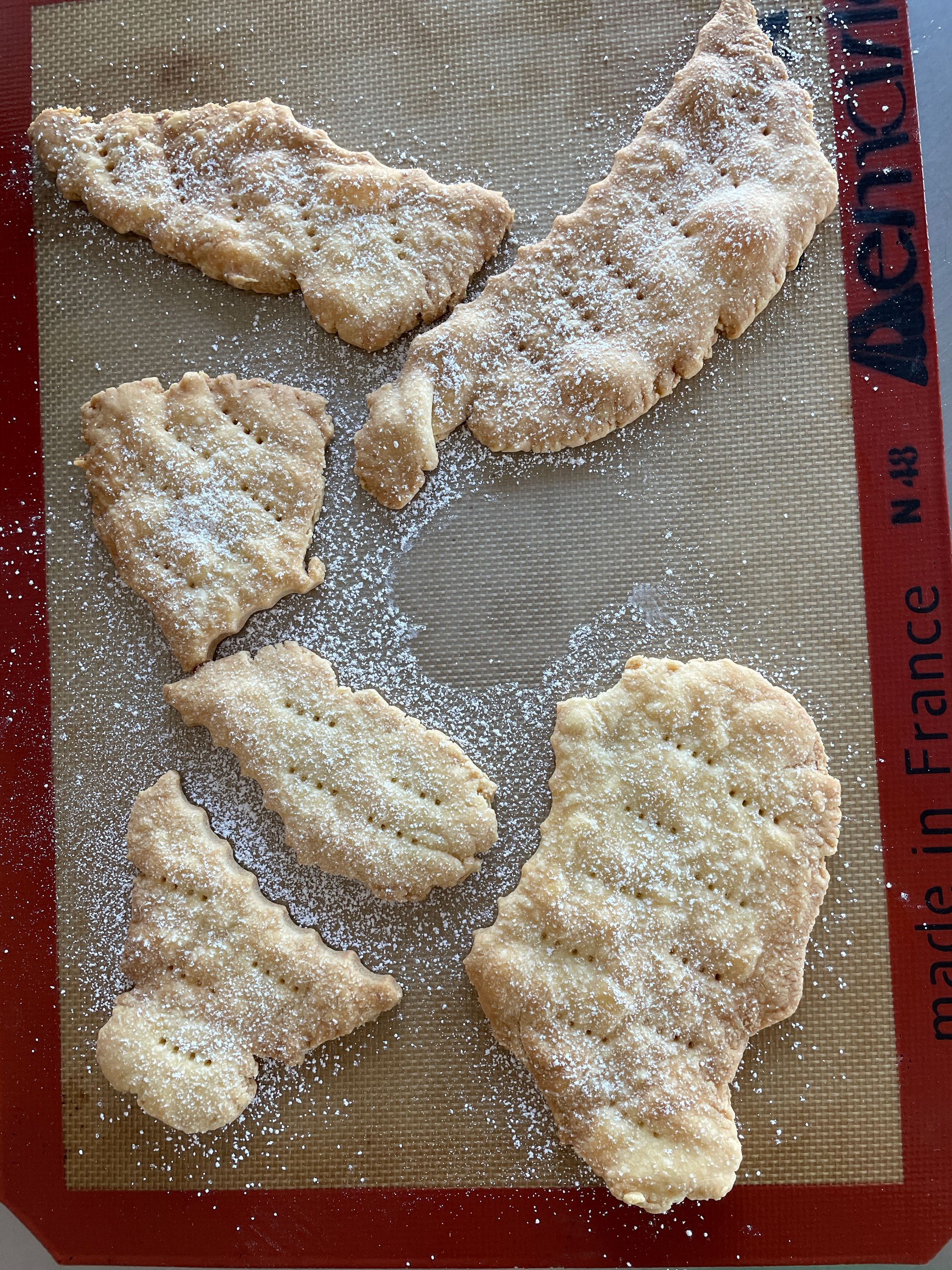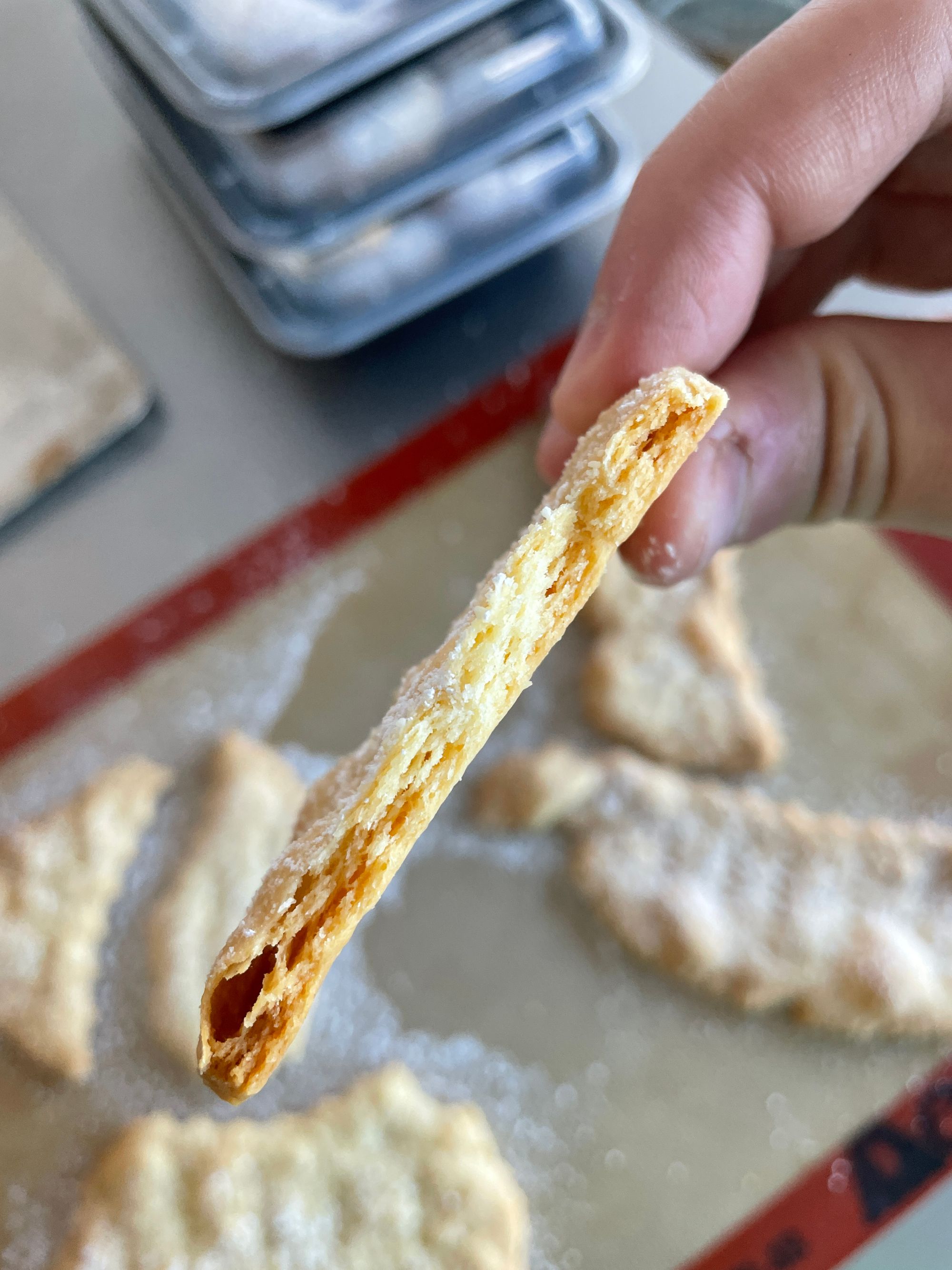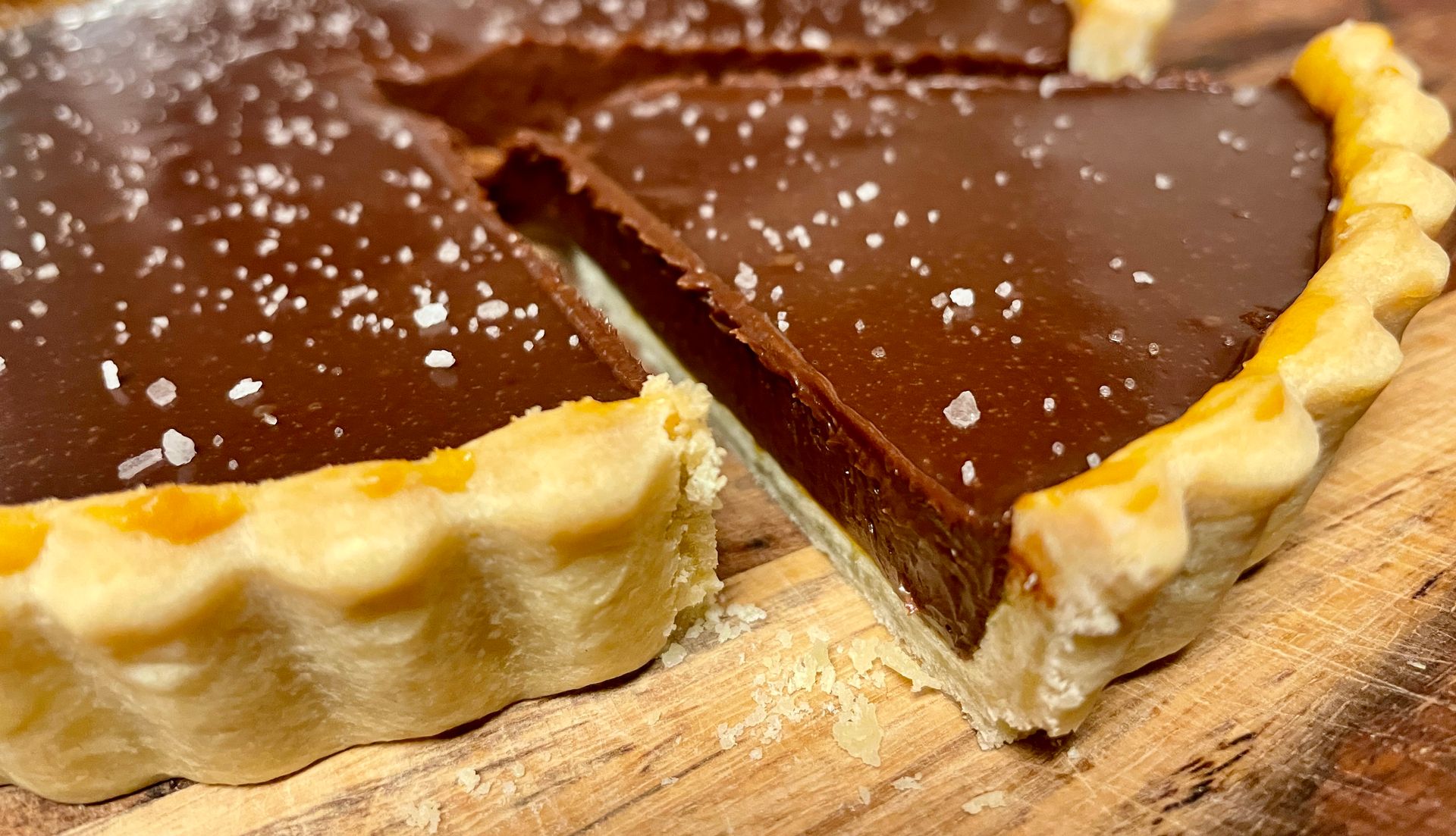A few weekends ago I made a disappointing lemon tart and wanted to right my wrongs. Energized by a round of YouTube recipe bingeing, I decided to try my hand at a chocolate ganache tart.
I was completely blown away. Delicious, idiot-proof, flaky pastry on my very first try. A luxurious, rich, delicate ganache that was just as easy to make. The first tart was such a hit with my neighbors that I decided to make a second one the next day for a friend's birthday. I would keep making them, but I fear my waistline might not survive.
Timeline
Most of the time for this recipe is passive time, but you need to give yourself at least 5 hours to complete the tart. That might be ambitious and even risky, but it's definitely possible.
- 15-45 minutes to form the pastry dough, depending on whether you mix by hand or in a blender
- Minimum 1 hour to let the dough rest
- 1 hour to roll out and bake the pastry
- 30-45 minutes to make the ganache
- Minimum 1 hour to let the ganache set
Scaling the Recipe
My tart case is 7.5 inches in diameter. If your tart case is larger or smaller, remember that values won't scale linearly. My tart case's area is about 45 square inches, but a 10 inch tart case takes up nearly 80 square inches, so the 250 grams of flour I used for my pastry would turn into 440 grams. And a 6 inch pan would only require 150 grams of flour. Remember your math class:
Area = ( Diameter / 2 ) ^ 2 * piThe Pastry
The ingredients for short crust pastry are very simple and can be scaled up or down if needed. My pastry recipe is originally from this lovely YouTube video, but the ratios seem pretty consistent across recipes:
- 125 grams cubed, cold butter (just a bit more than 1 stick)
- 250 grams all purpose flour + enough flour to dust work surface
- 1 medium egg yolk (about 18 grams for those needing to scale up or down)
- 45 grams water
- 5 grams salt
- 5 grams sugar
As mentioned in the video, the last 2 ingredients are not required but can help enhance certain characteristics of a dish. Chocolate and salt play super well together, so I decided to go for a full 5 grams of salt.
Form the dough
Cut your butter into cubes and stick them in the freezer for a minute or two. They don't need to be frozen, but you don't want them melting.
Measure out your flour, then add it and the butter to your blender. Pulse gently until a sandy texture emerges and the better chunks are no longer visible. If you are not using a blender, you can try to follow instructions from this video, but be warned it is much more difficult.
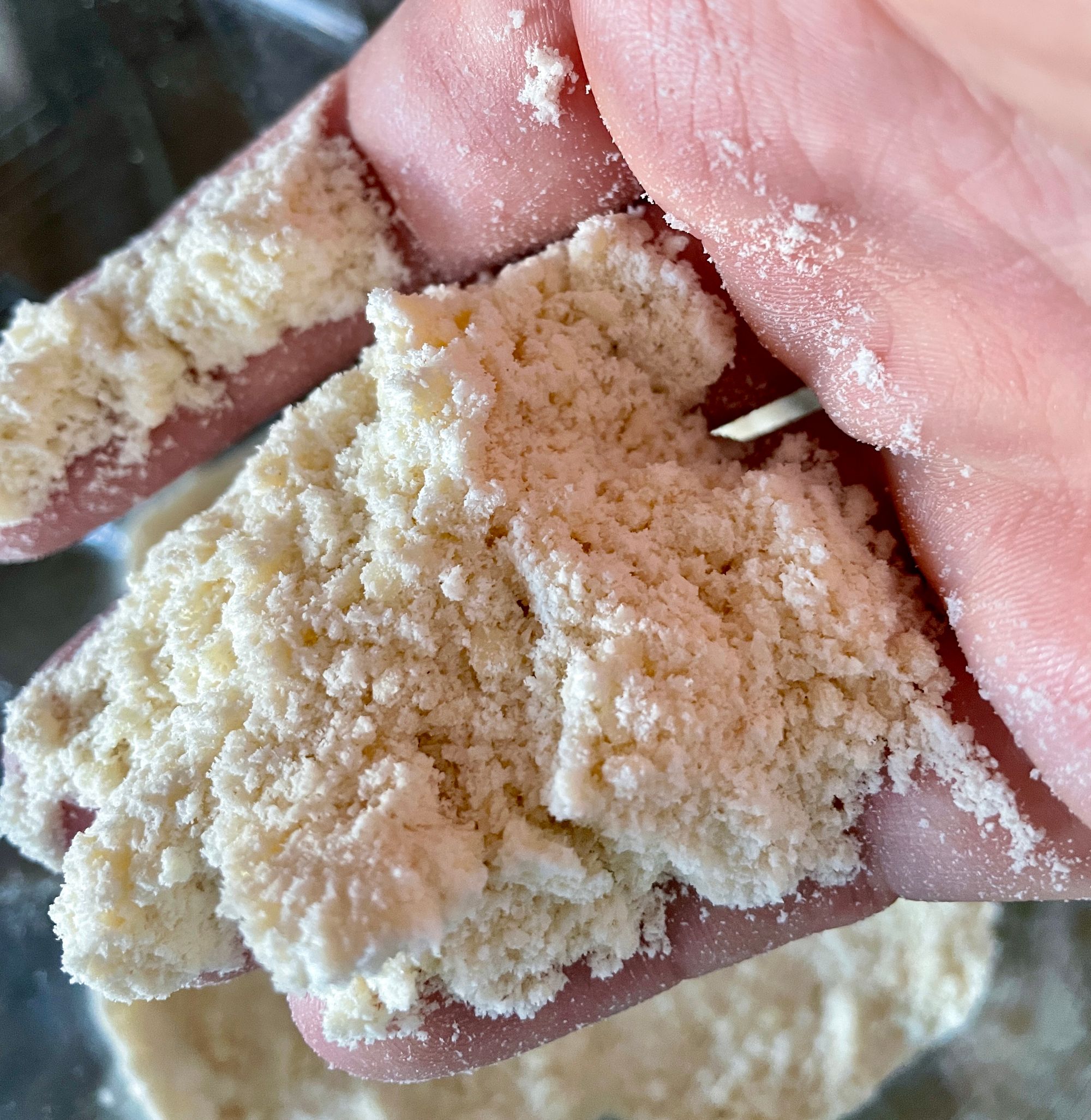
In a separate container, mix your other ingredients until the sugar and salt are fully dissolved. It will look a little bit like thin orange juice. Run the blender on low speed and slowly add the mixture. The dough will form into a scraggly clump pretty quickly.
Throw the dough pieces onto a lightly floured surface and gently squish it together into a smooth ball. Try to minimize the number of seams in the ball, but it's not a big deal if there are some.
If you have plastic wrap, use that to wrap your dough ball. If you're like me and you forgot to buy some, you can use an airtight sandwich bag. Just do your best to remove as much air as possible.
Leave the dough in the fridge for at least an hour to rest. If you made an airtight seal, you can let it sit for as long as a day (or so I'm told). If not, the dough will start to dry out and you should use it soon.
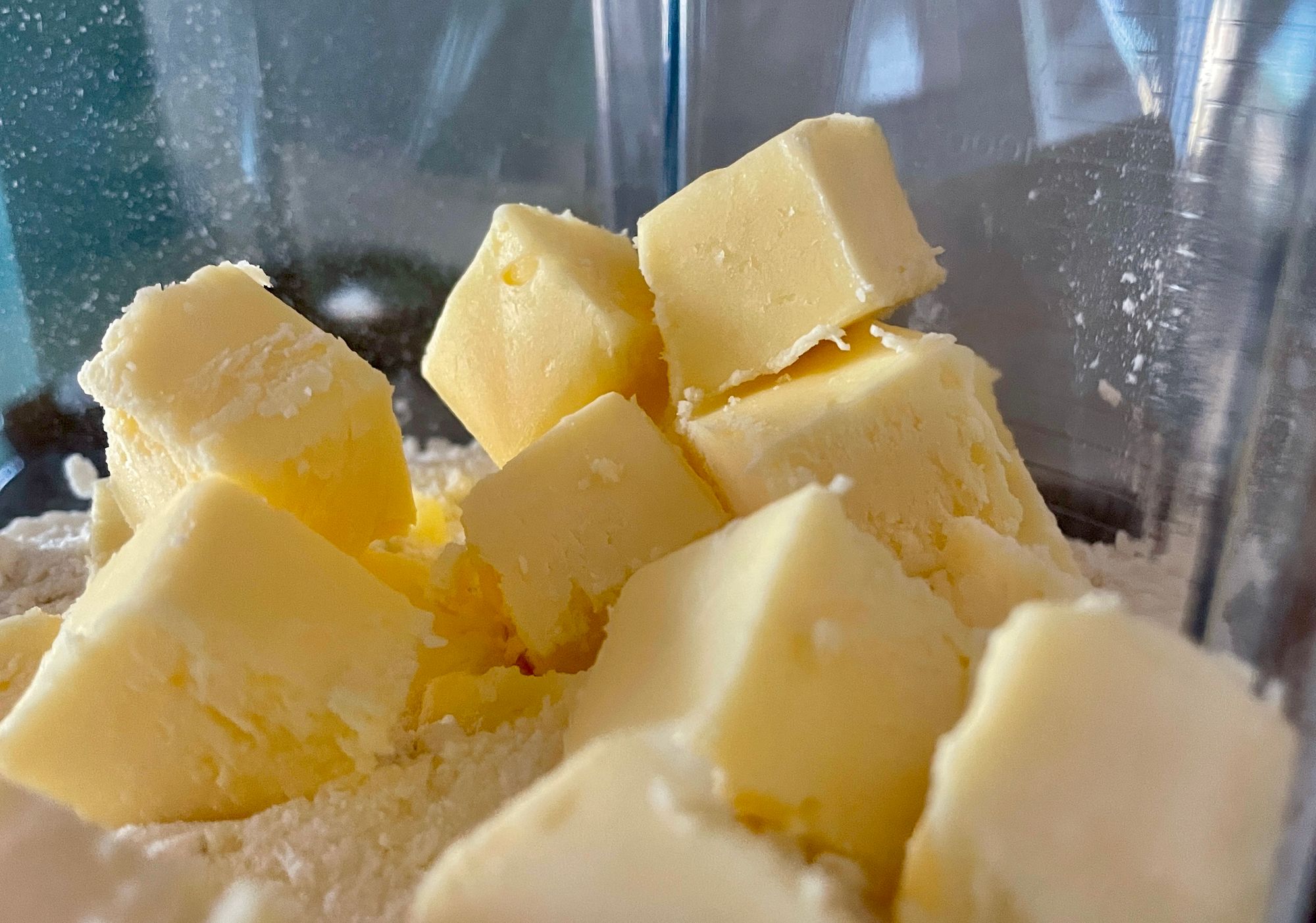
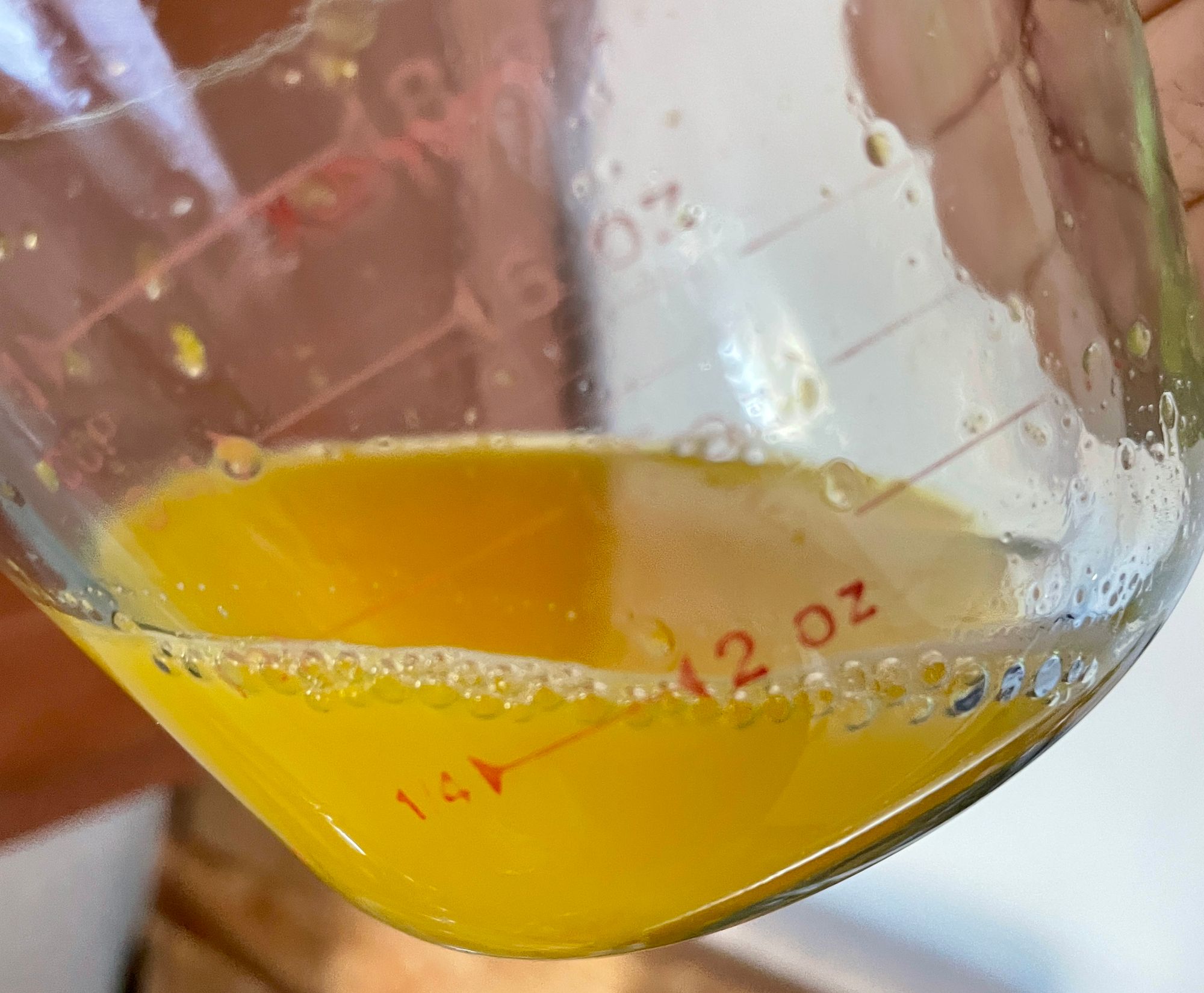
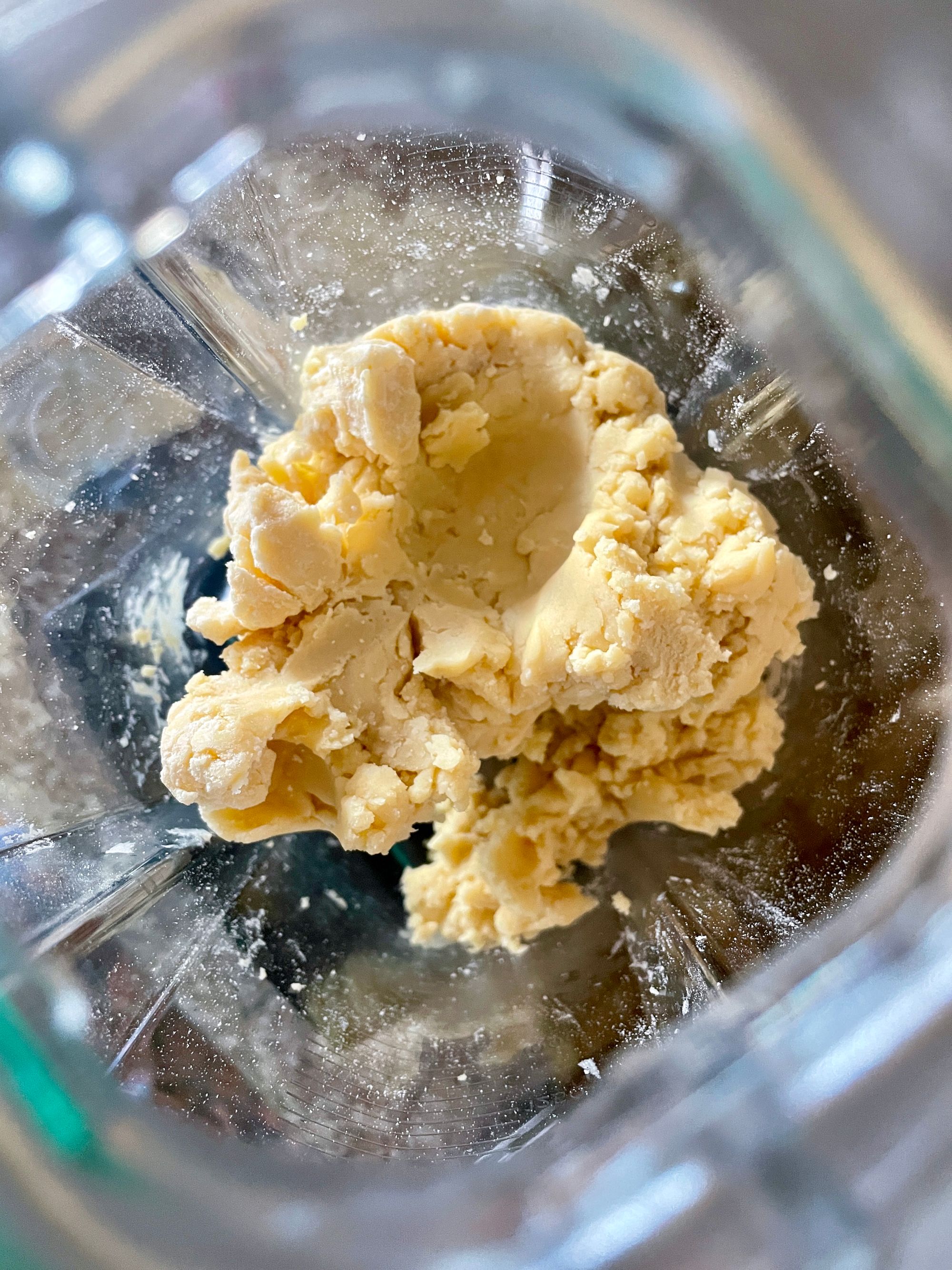
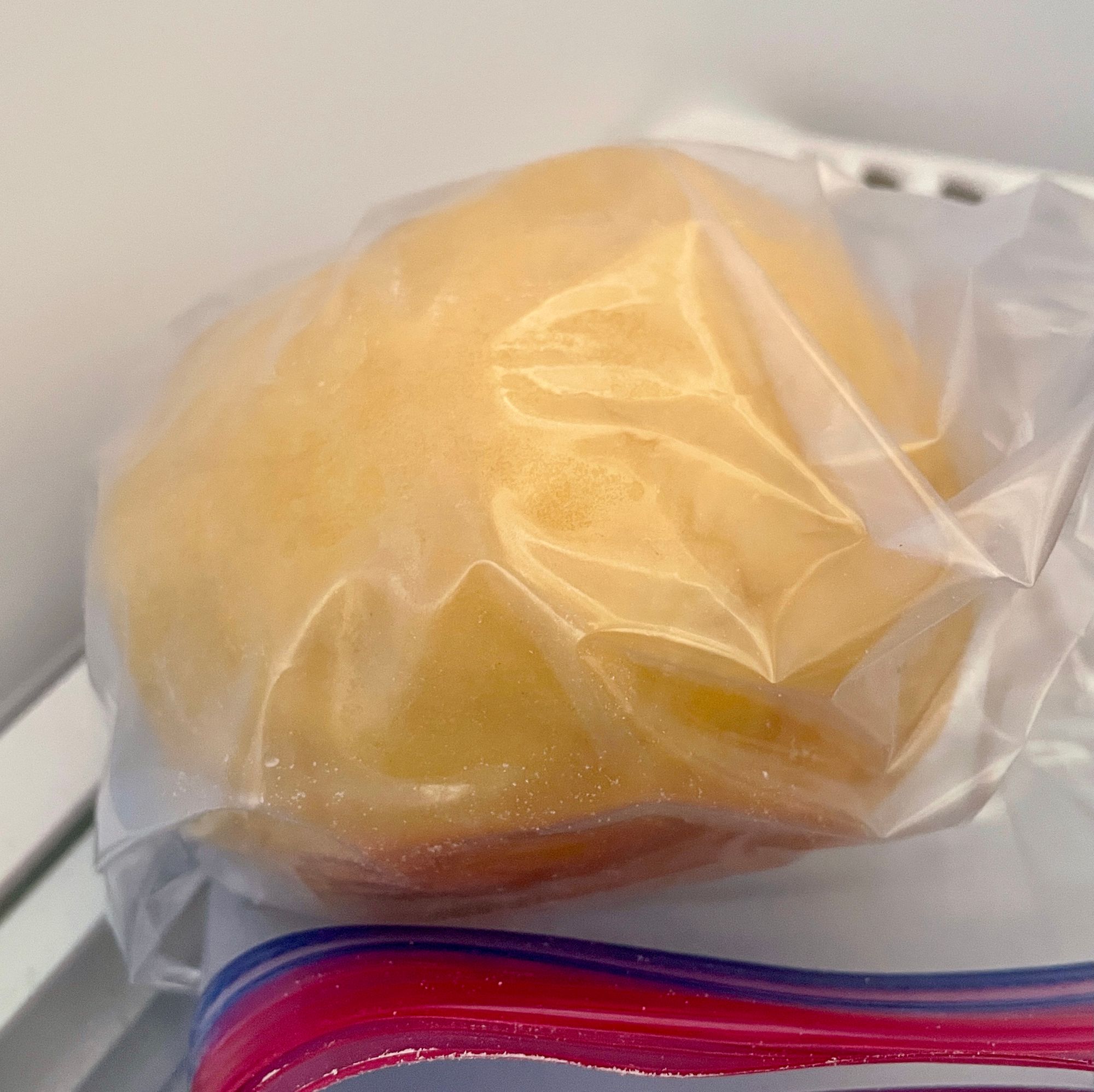
Cook the tart case
Preheat your oven to 375° F. When it's heated fully, take your dough ball out of the fridge and place it on a lightly floured surface.
Roll out your pastry to something close to 5mm in height. Mine was a bit chunky so it's clearly not that important, but you definitely don't want to have a bread-like base. Then gently place it over your tart case and shape it by pressing into the corners of the case. After a few trips around the pan it should start to take on a fluted edge and hold itself in place. Trim the tart case by using a knife or just rolling the pan with your rolling pin (my preferred method). Finally, dock the case by stabbing it with a fork all over (including the sides). Save the scraps for snacking while you finish the recipe (you'll want to dock those, as well)!
The case is now ready to go into the oven. You'll need baking beans or clean coins to weigh down the case and keep it from puffing up in the oven.
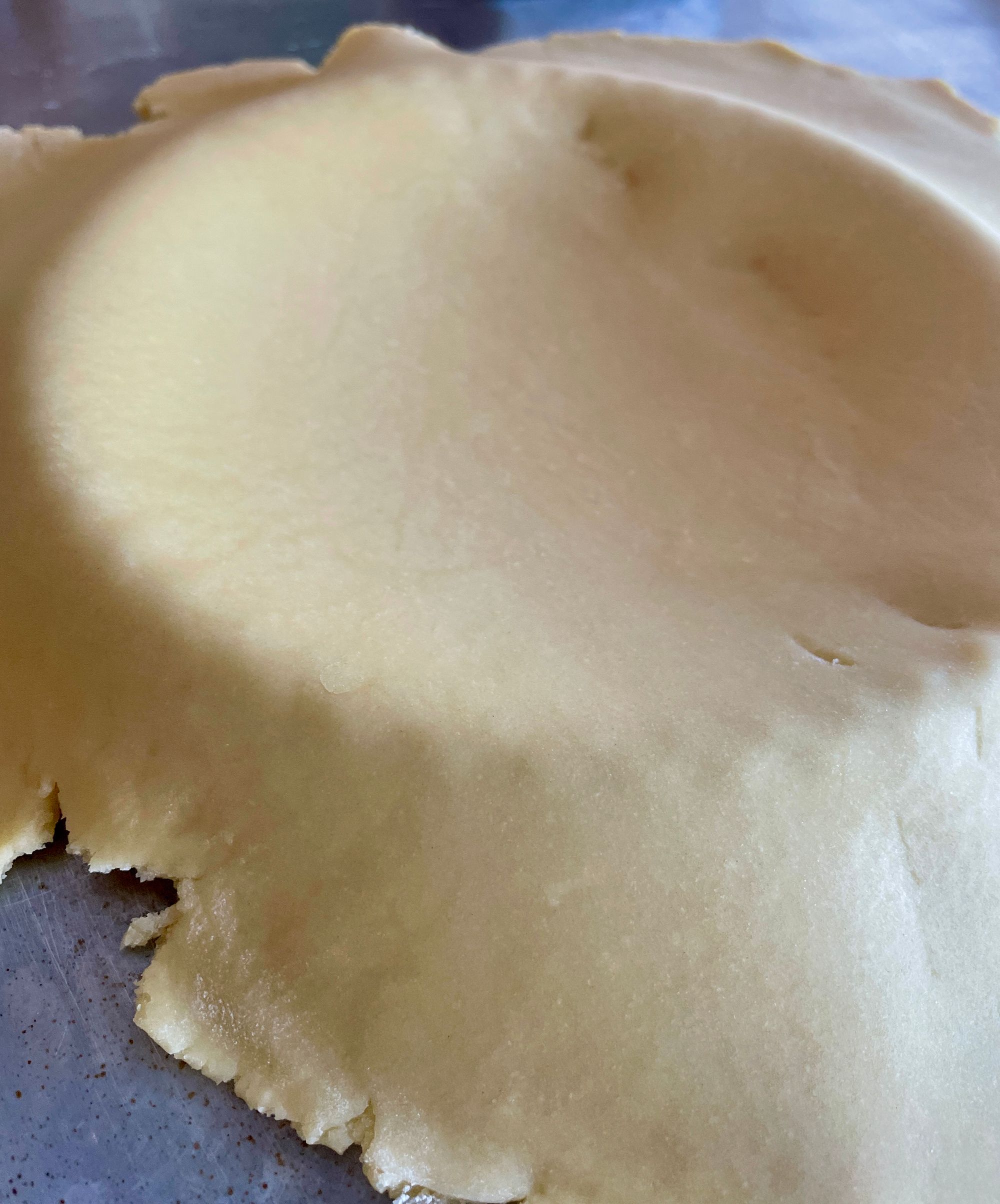
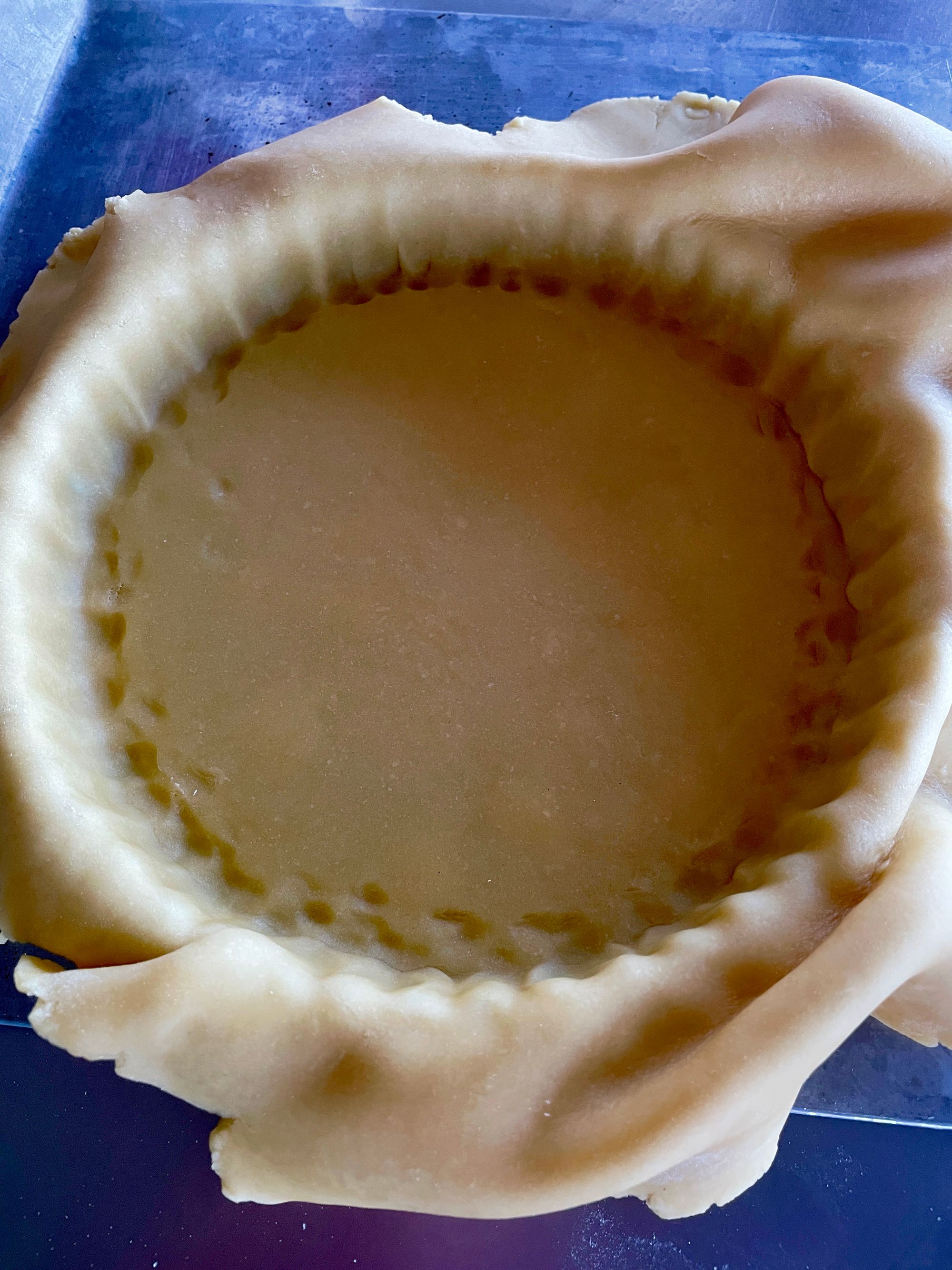
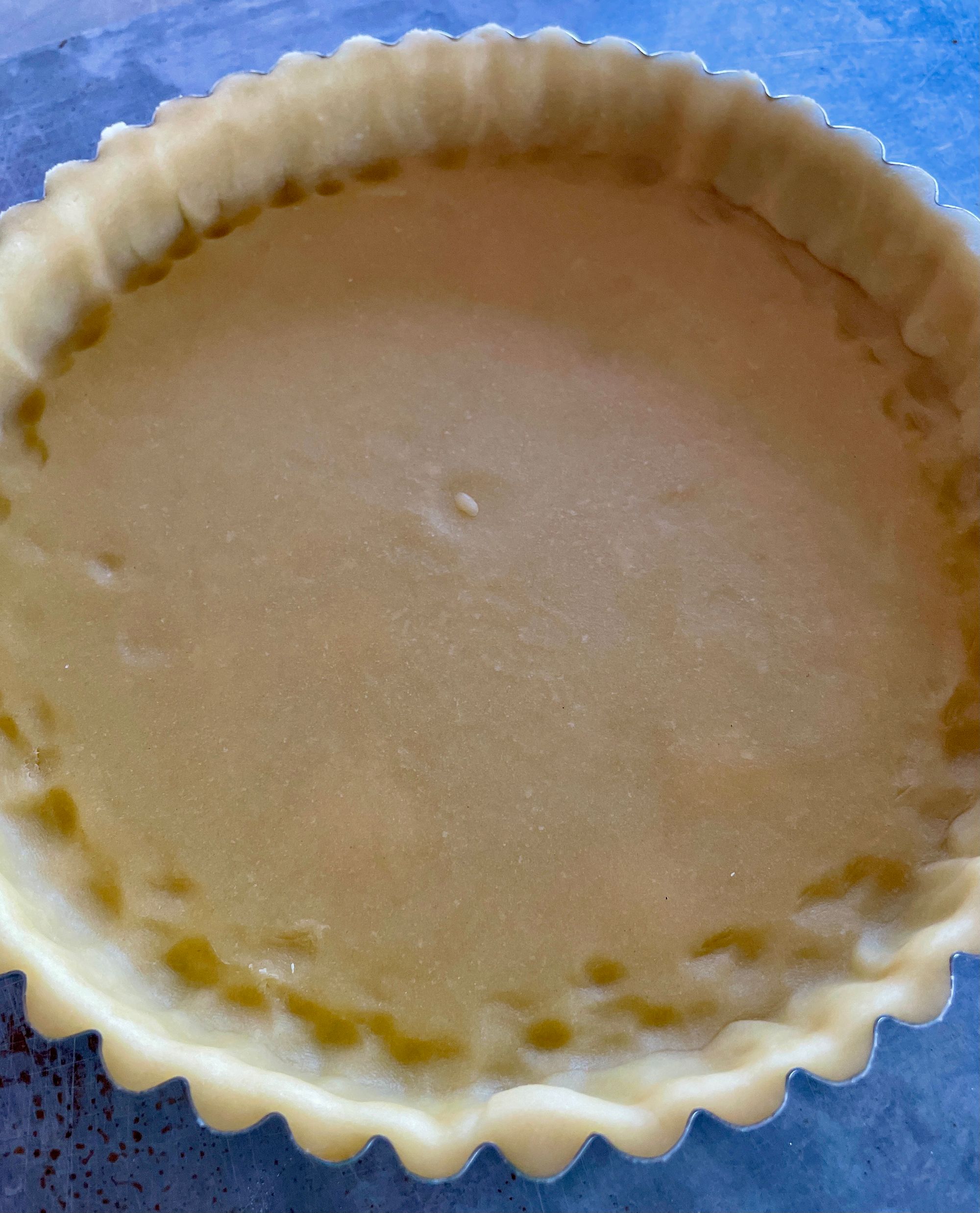
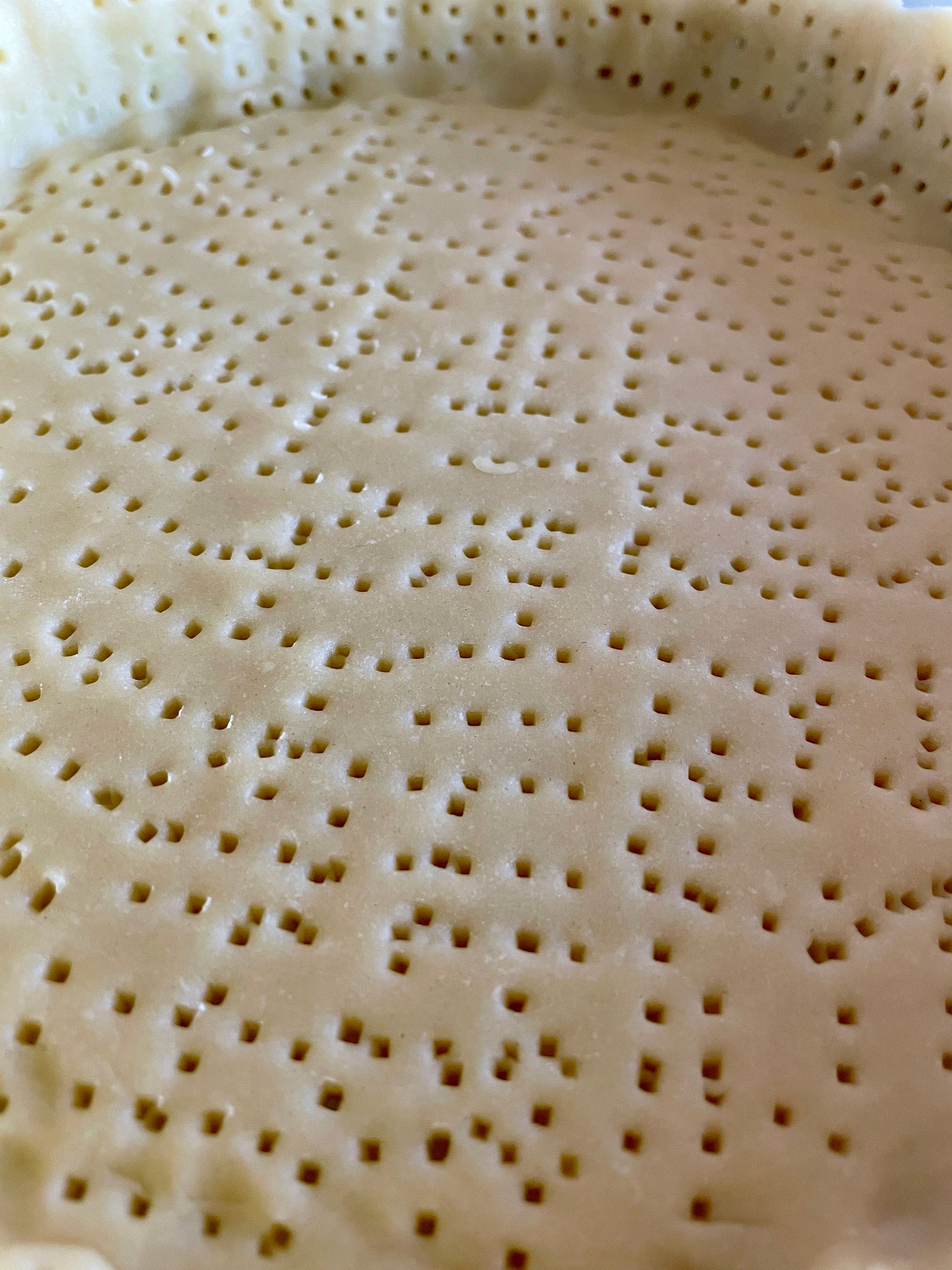
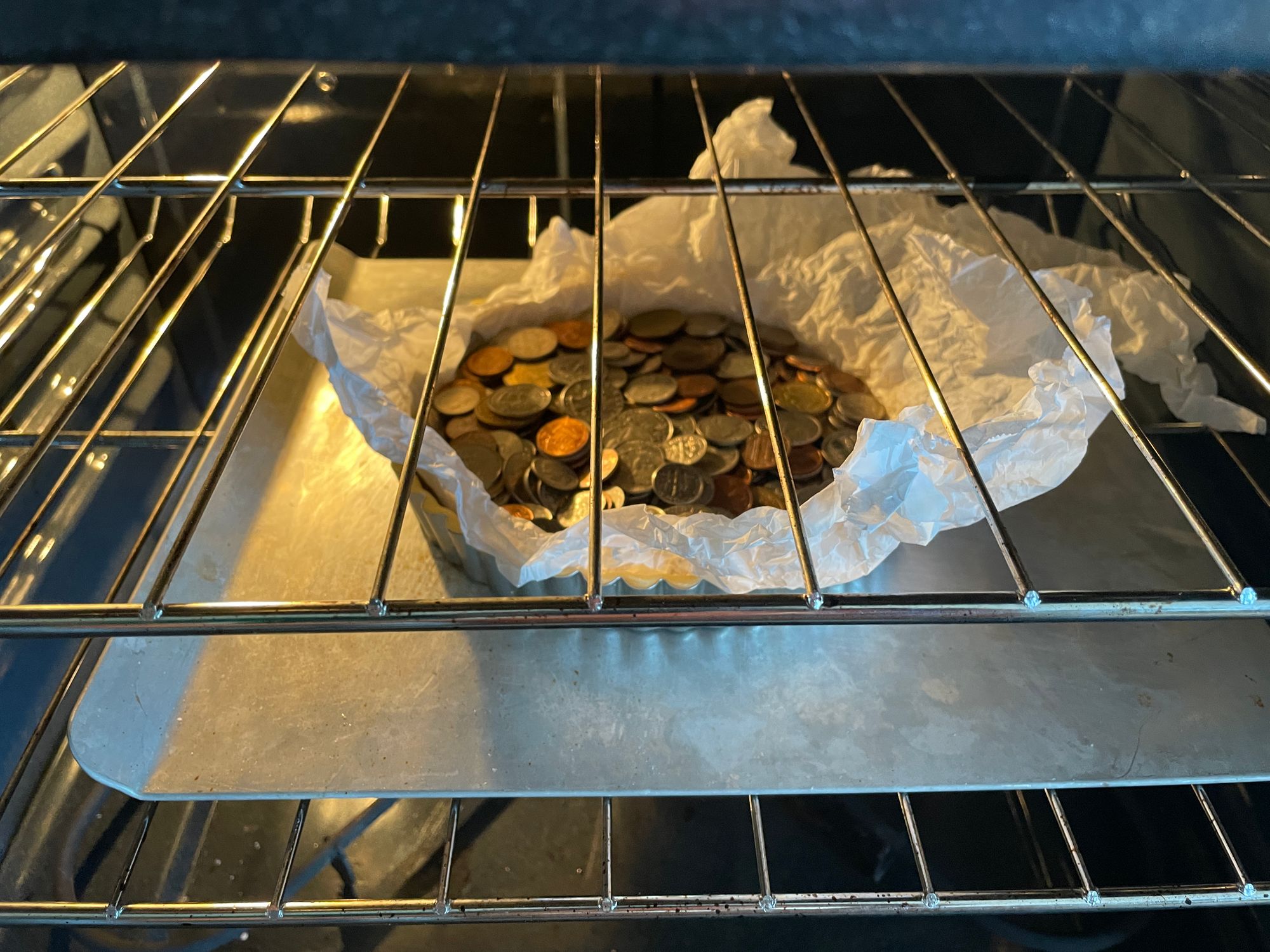
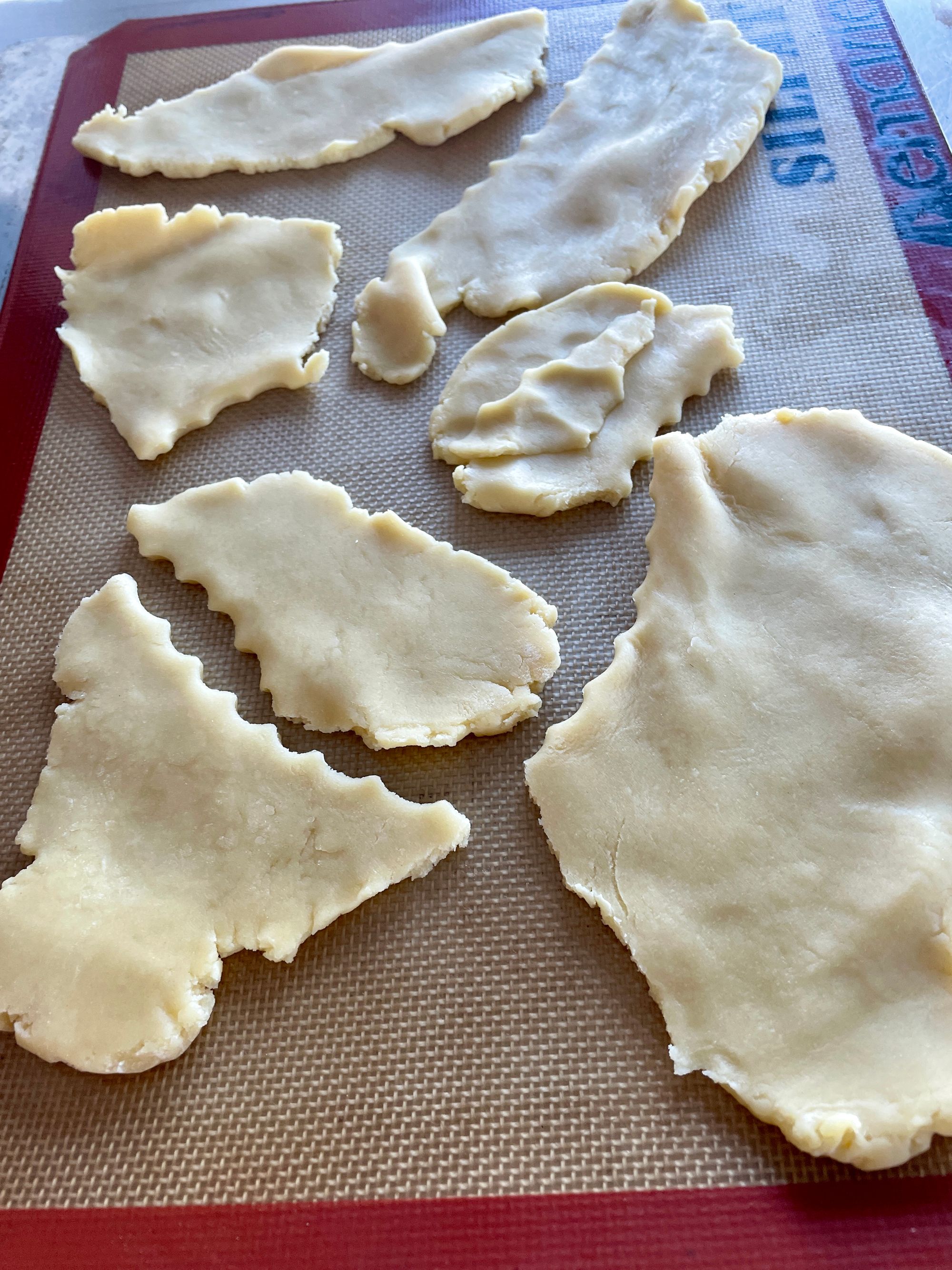
Cook for about 20 minutes, or until the edges start browning. I set my timer for 15 and then checked it every minute after. You can then remove the baking beans or coins and bake for another 5 minutes or so, or until the case is a pale brown. While the case is out of the oven it will look a little bit sad, but it's a good time to add some egg wash if you're interested. It helps brown the edges of the crust just that little bit better, but I've never made the center of the case look particularly appetizing. I'm sure I'm doing something wrong.
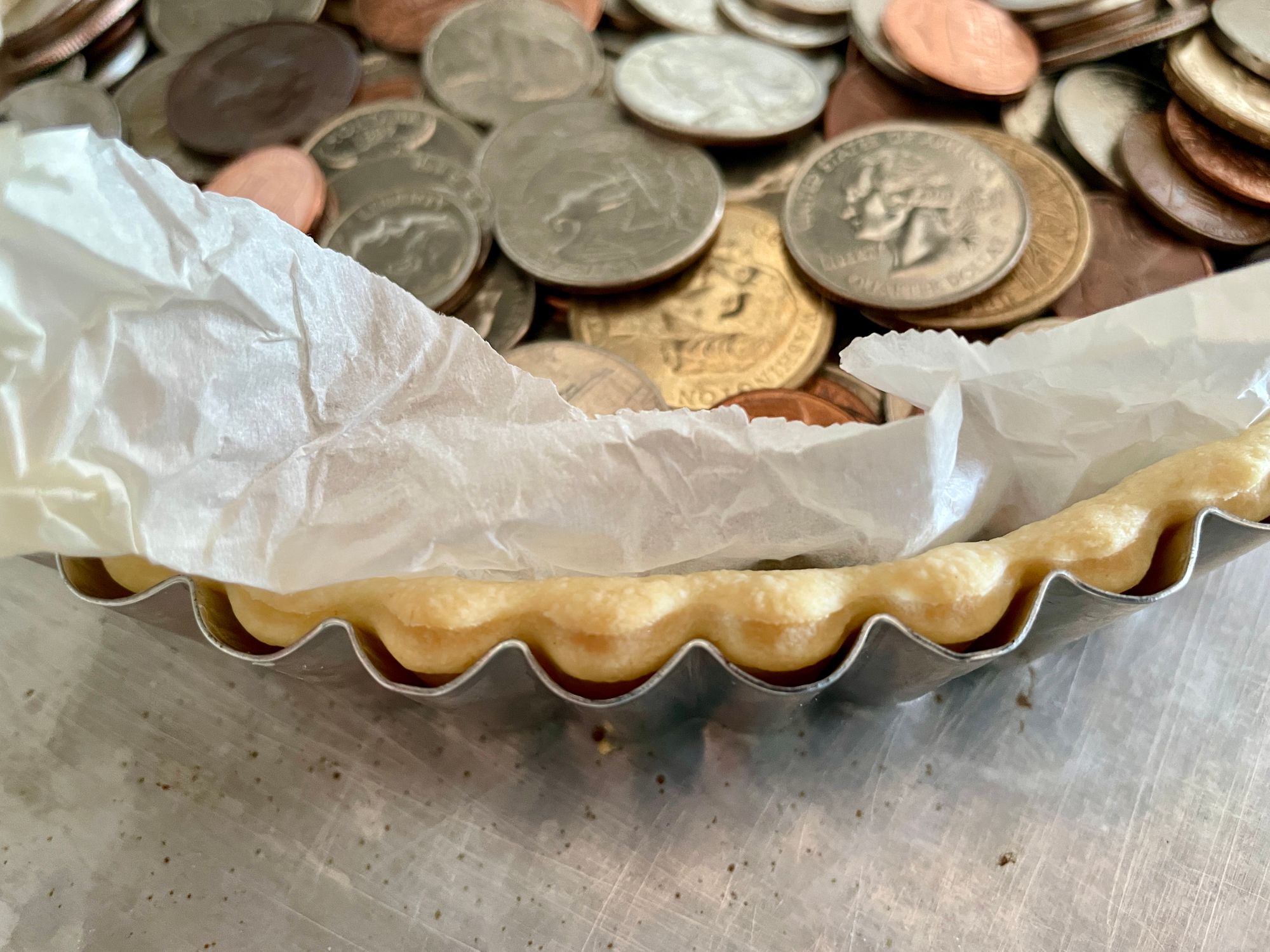
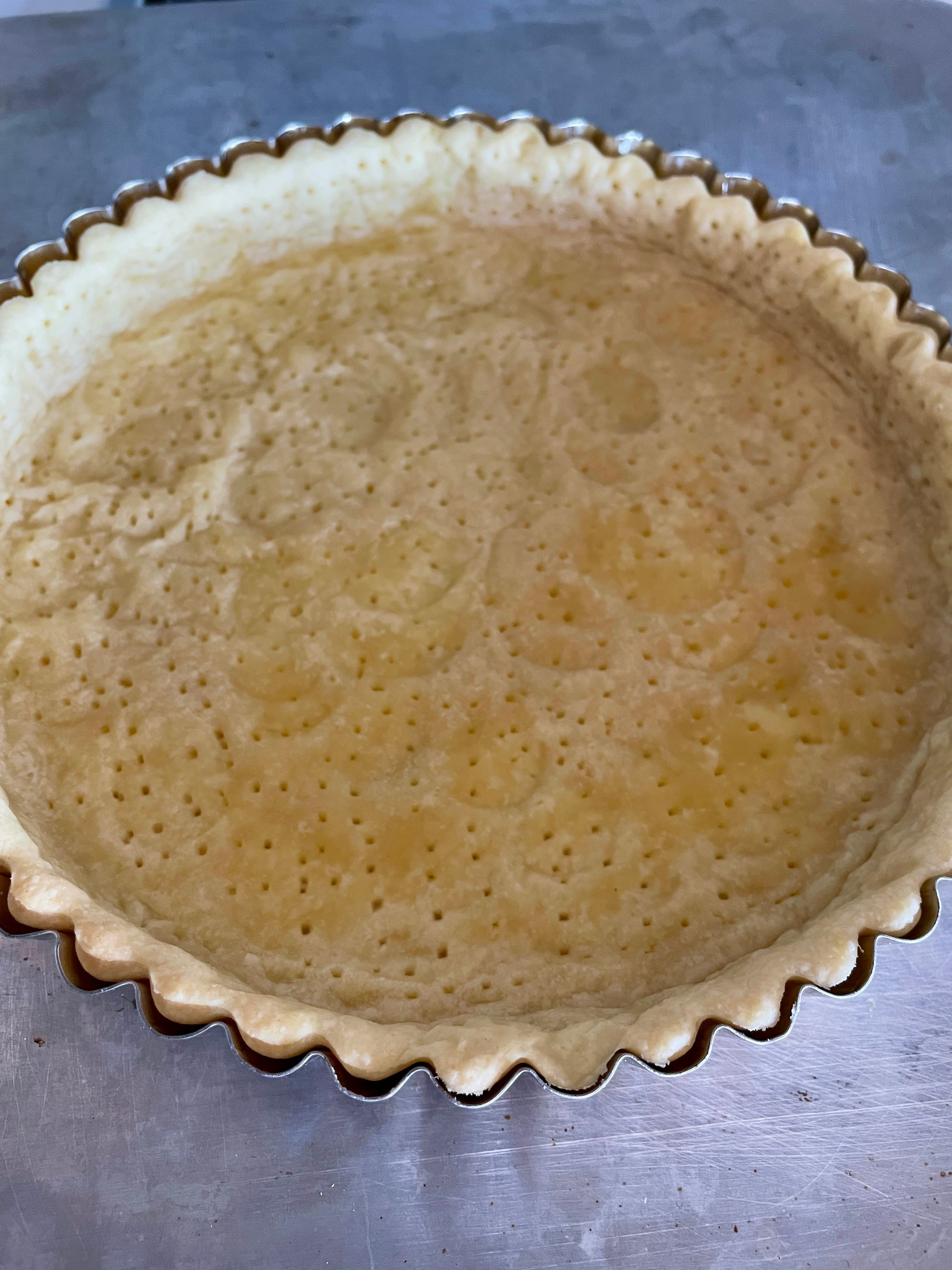
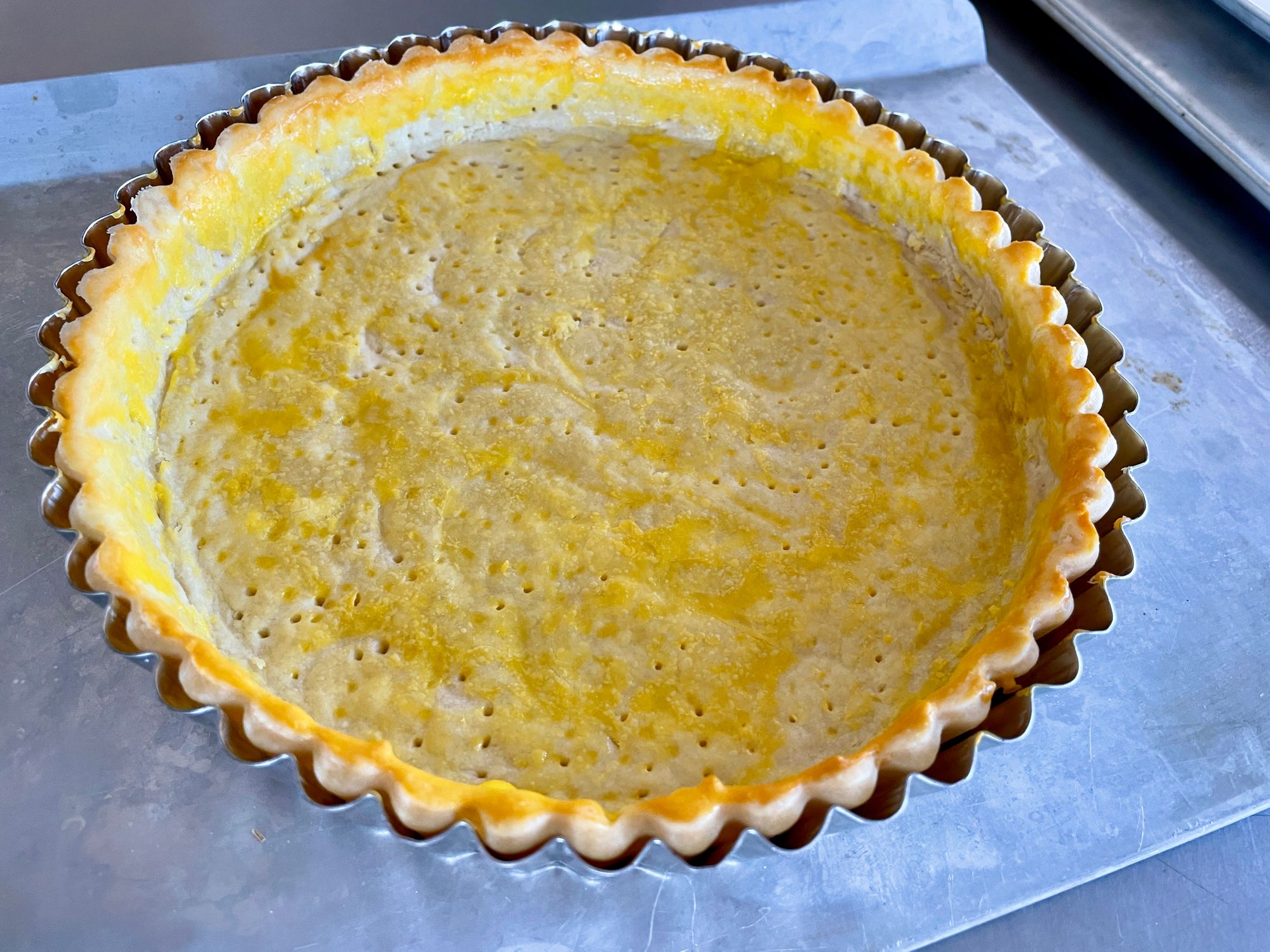
Your tart case is cooked. Once it's cooled off a little, you can start making the ganache.
The Ganache
I always thought ganache was difficult to make, but it turns out it is incredibly straightforward and potentially even idiot-proof. For a thick, silky ganache, a 50:50 ratio of chocolate to liquid seems to work very well.
There's a lot of room to play around with flavoring here, but I settled on a little bit of alcohol and honey to go with my cream to add some extra zing to the final dish. Incredibly, you can even make ganache with just water and chocolate, though I think I prefer the extra fattiness from dairy.
The most important part of this dish is the chocolate. Pick a chocolate you like and can eat in large concentrations. I grabbed a semi-sweet baking chocolate for my attempts, but I can imagine some people like a more intense flavor and would prefer something darker. I would caution you against picking anything sweeter than semi-sweet since we'll be adding a lot of dairy (or, I will be), which comes with a good amount of sweetness, and using milk chocolate may not allow your ganache to set properly.
(Author's note: a previously published version of this post said to use 185 grams; this does not fill the case as effectively as 200).
- 200 grams chocolate, either chopped or in chip form
- 170 grams heavy whipping cream (or double cream)
- 15 grams cognac
- 15 grams honey
This gives me 200 grams of liquid (honey+alcohol+cream) to match the mass of my chocolate. From here the recipe is extraordinarily easy:
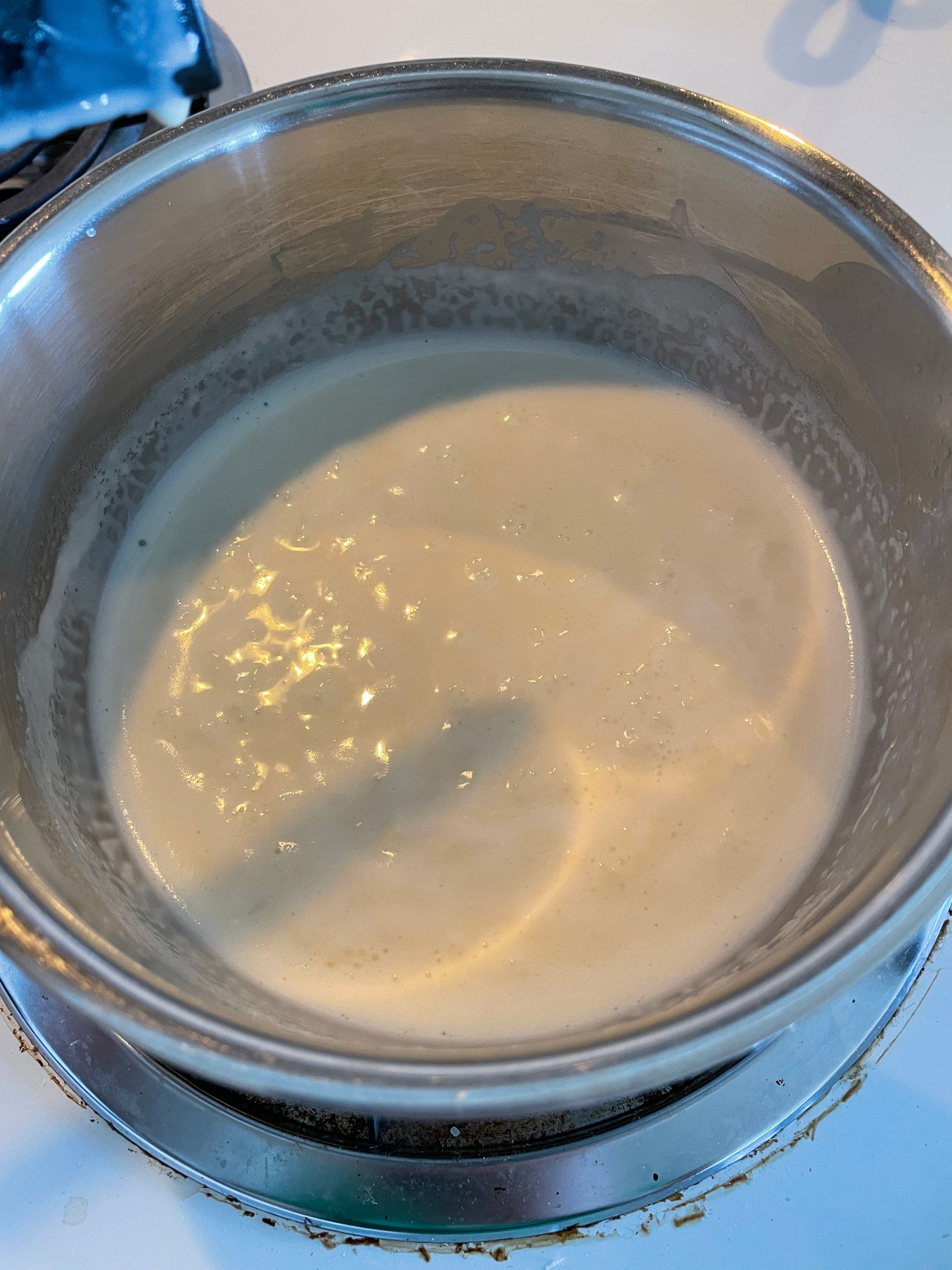
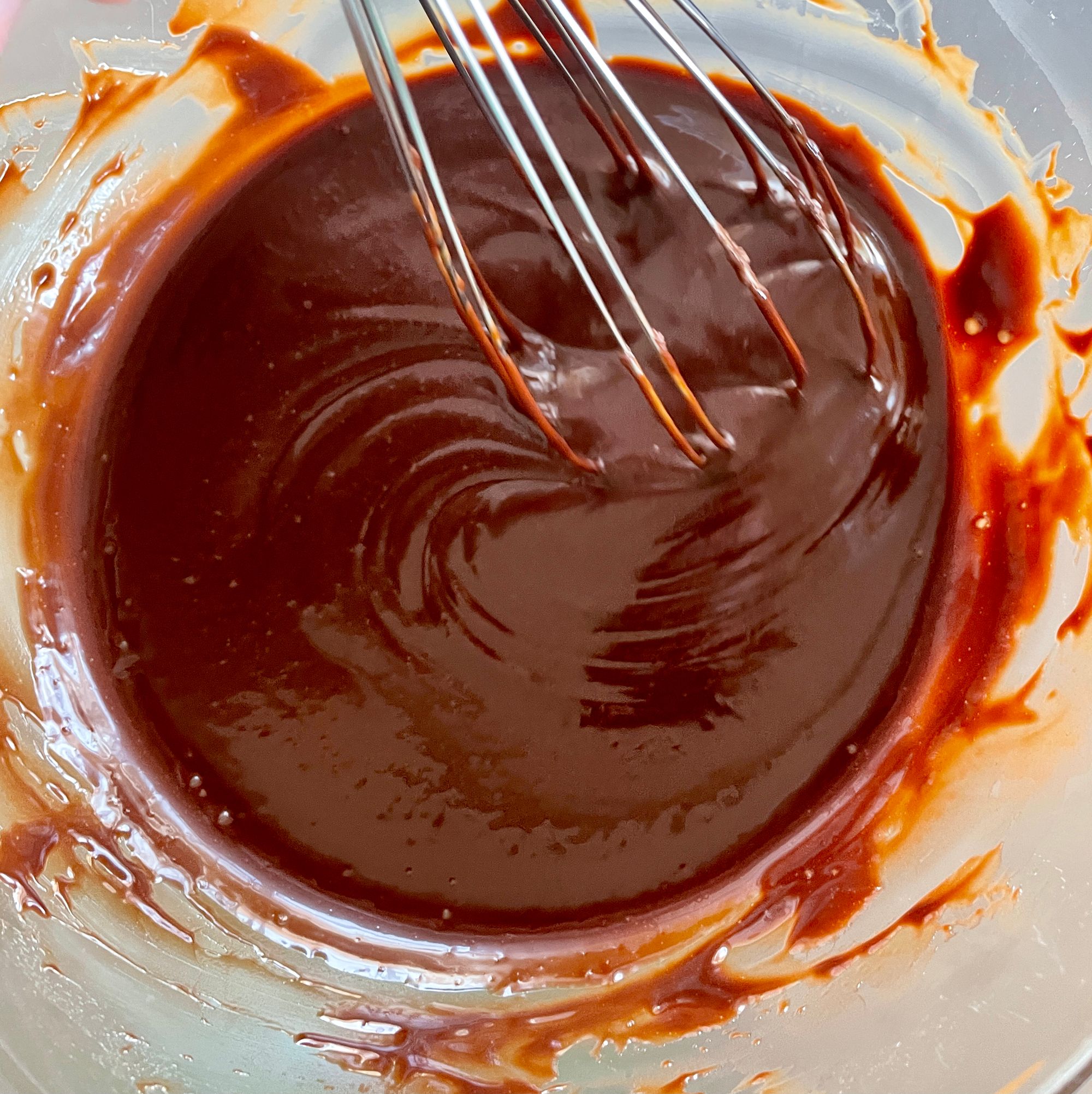
- Place the chocolate pieces in a bowl.
- Place your other ingredients into a saucepan.
- Heat the saucepan on a pretty high setting, whisking the mixture constantly.
- When the mixture just starts to boil, pour it over your chocolate.
- Gently mix the chocolate and hot cream together. If you use a whisk, try to avoid incorporating too much air. You can see tiny air bubbles all over my first attempt below.
- When the mixture thickens and cools to the point where you can draw a figure 8 in it and have the image remain for 5 seconds or so, pour the mixture into your tart case.
- Place your tart in the fridge for at least 1 hour to let the ganache set. 2 hours is more appropriate, but I was in a rush last weekend and needed to transport the tart only an hour after it went into the fridge. People still loved it.
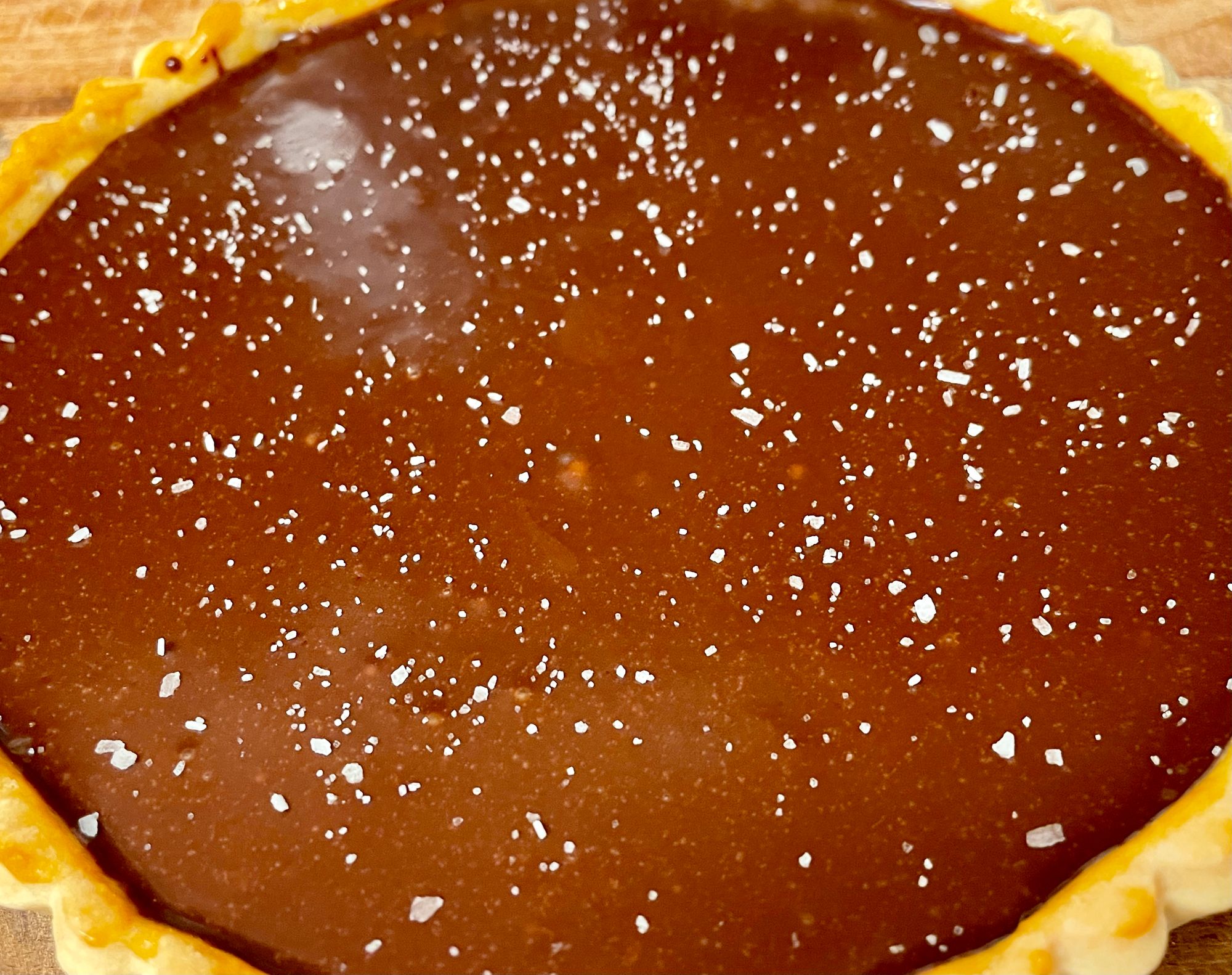
Serve
Once the ganache has set, sprinkle with a little bit of flaky salt. Salt and chocolate really are best friends. Slice and enjoy!
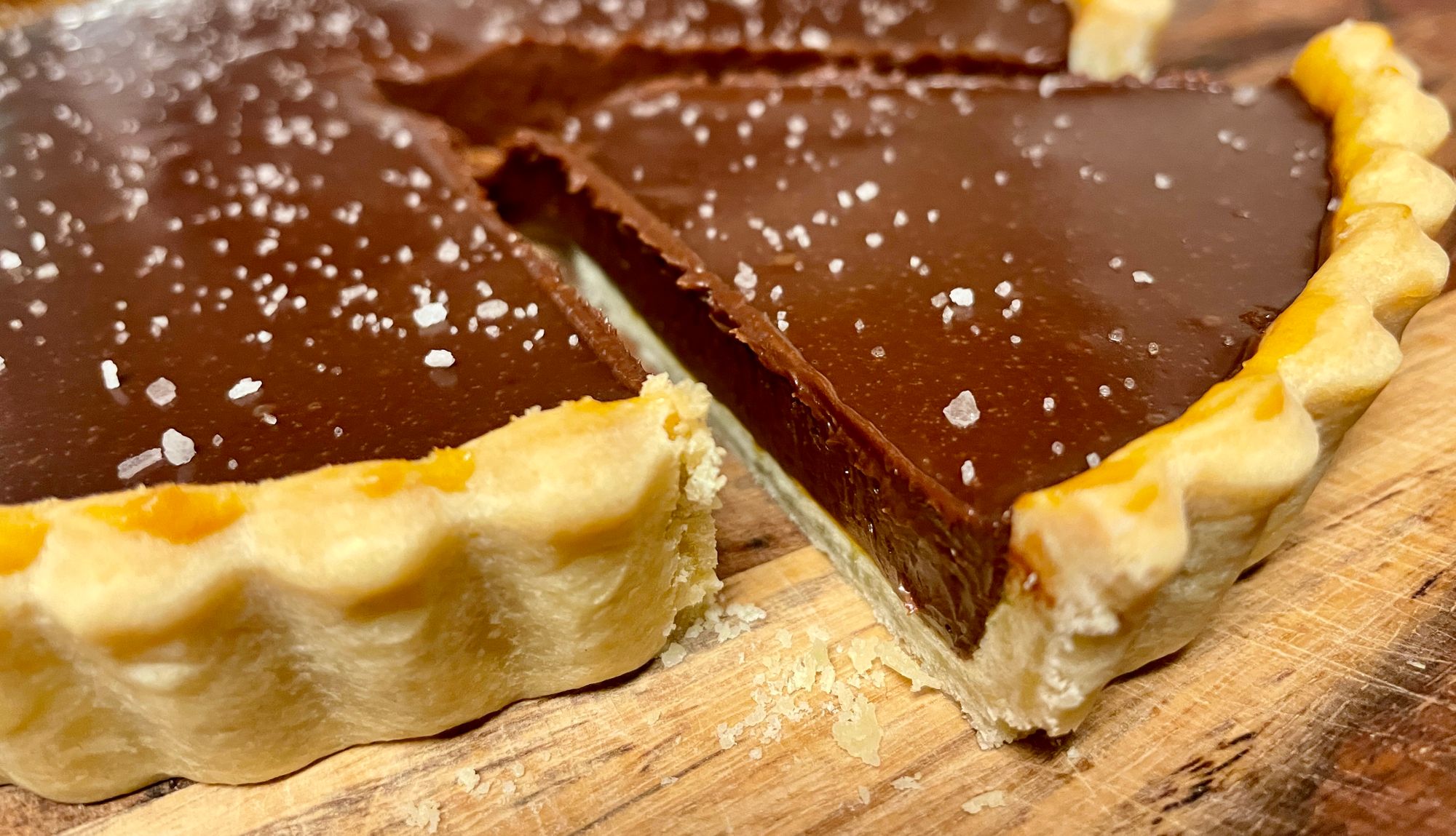
Bonus
The scraps from the tart case make excellent little snacks while you wait for other parts of the recipe to happen. I dusted mine in powdered sugar and a little bit of cinnamon, but even on their own they were buttery and irresistible.
